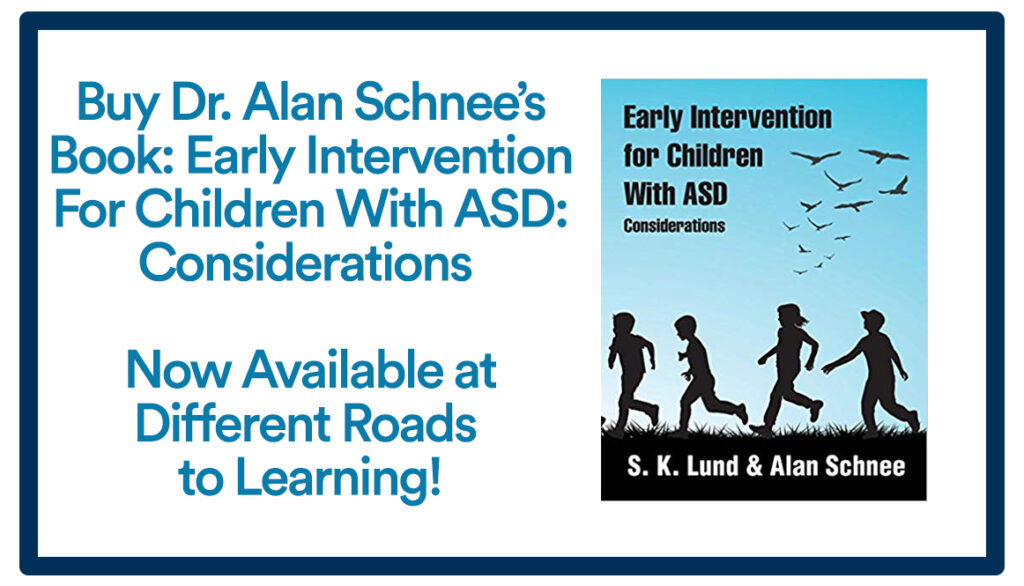
This month’s ASAT feature comes to us from Kate McKenna, MEd, MSEd, MS, BCBA, Association for Science in Autism Treatment, and Brittany Hardie, PT, DPT, Melmark. To learn more about ASAT, please visit their website at www.asatonline.org. You can also sign up for ASAT’s free newsletter, Science in Autism Treatment, and like them on Facebook!
This is part of the Description of the Treatment Team series.
History
As detailed in Moffat (2003), physical therapy has a long history in the United States and the profession has evolved over time in response to multiple major historical and medical events. The involvement of physical therapists in responding to polio epidemics that erupted sporadically from the 1800’s to the 1950’s, when the development of the Salk polio vaccine led to control of the disease, resulted in a gradual expansion of the field and innovations in the use of physical therapy to treat severe mobility deficits. Bed rest with long-term splinting and casts which immobilized limbs and the spine was an early accepted treatment for polio. This treatment led to muscle atrophy which then required physical therapy in an attempt to regain mobility. Later interventions for polio included exercise, massages, heat and light therapy, hydrotherapy, and the use of assistive and adaptive equipment. Physical therapists were at the forefront of responding to those who survived polio and needed support to cope with the effects of the disease.
The two World Wars also heavily impacted development and innovations in physical therapy. During World War I, physical therapists, known also as reconstruction aides, worked with doctors, providing exercise programs, hydrotherapy, and massage therapy to wounded soldiers. The number of amputations in World War II led to the funding of the Artificial Limb Program, a 25-year effort to enhance prosthetic services and to support veterans in their use. As with treating polio survivors, physical therapists were instrumental in staffing the programs that developed new technology and intervention strategies for amputees.
Professional associations for physical therapists were first founded in the 1920’s with the American College of Physical Therapy (ACPT), which was later known as the American Congress of Physical Therapy. The American Women’s Physical Therapeutic Association (AWPTA) held its first meeting in 1921 to establish professional and scientific standards for physical therapists, who at that time were predominantly women. The name of this organization was changed to the American Physiotherapy Association (APA) in 1922. The goals of the APA included establishing standards for education and scientific research, promoting the practice of physical therapy, providing a central registry of trained therapists, and providing current information on physical therapy to members of the medical profession and the public. By the late 1930’s, physical therapy was considered a medical specialty. In 1946, the APA changed its name to the American Physical Therapy Association. Also in 1946, the Hill Burton Act was passed. The bill established an effort to build a nation-wide system of hospitals across the United States. Six thousand nine hundred hospitals were built by 1975. As medical specialists, physical therapists continued to work alongside doctors, nurses, and hospital staff to provide critical care in the area of movement rehabilitation.
When the Education of All Handicapped Children Act, now known as the Individuals with Disabilities Education Act, was passed in 1975, physical therapy became a related service offered to students in educational systems. Today, physical therapy is a commonly mandated related service provided to students with autism and other developmental disabilities.
Education
Graduate-level coursework for physical therapists (PTs) includes courses in anatomy, physiology, kinesiology, neuroscience, pharmacology, ethics/values, behavioral sciences, biomechanics, and clinical reasoning. All certified and licensed PTs hold a clinical Doctor of Physical Therapy (DPT) if they enter the field after 2016. This involves obtaining a bachelor’s degree in a related field, such as health science or biology, and then continuing with a 3-year DPT program at an accredited college or university. Prospective PTs then must pass the National Physical Therapy Exam (NPTE®) for physical therapists, which is based on a comprehensive practice analysis to assess critical knowledge, skills, and abilities of physical therapists. Additionally, PTs are licensed to practice in the state or jurisdiction where they work.
A Physical Therapy Assistant (PTA) practices with an associate’s degree from an accredited physical therapy program, which is a combination of coursework and clinical training. PTAs must also pass the National Physical Therapy Exam (NPTE®) for physical therapist assistants. PTAs practice under the supervision of a DPT and the parameters of that supervision may vary by state. The Continuing Education (CE) requirements needed to maintain both levels of licensure also vary by state.
Guiding Documents
PTs are guided in their practice by the American Physical Therapy Association Code of Ethics for the Physical Therapist which consists of eight principles that speak to protecting the dignity of consumers, acting with integrity, the use of evidence-based practices, committing to ongoing professional development, and engaging in ethical business and organizational practices. PTAs practice under the APTA Standards of Ethical Conduct for the Physical Therapist Assistant, which describes the principles as they apply to PTAs, and outlines the limit of their practice under the supervision of a PT.
All members of APTA have access to Clinical Practice Guidelines which are based on systematic reviews of the research evidence. The Guidelines are also intended to maintain consistency in care decisions. To aid PTs in staying current with trends and the latest refinements in their practice, the APTA website provides links for its members through Article Search with full-text access to research and articles from more than 5,000 clinical and academic publications.
Professional Organizations
The mission of the Federation of State Boards of Physical Therapy (FSBPT) is to “protect the public by providing service and leadership that promote safe and competent physical therapy practice.” The process of establishing the FSBPT began in the early 80’s in an effort to form a professional organization to oversee the continuing development and administration of the National Physical Therapy Exam (NPTE), which at that time was owned by the APTA. In 1987, 22 states committed to joining the newly formed FSBPT and in 1989 the ownership of the NPTE transferred from the APTA to the FSBPT. In addition to the certification exam, the FSBPT works to safeguard consumers by identifying and promoting effective regulation in physical therapy, ensuring safe and competent physical therapy service delivery, and providing educational programs and materials to its members and the public.
The American Physical Therapy Association (APTA) is the professional organization of physical therapists in the United States. Its mission is to build a community that advances the profession of physical therapy to improve the health of society. APTA’s stated vision for the profession of physical therapy is to transform society by optimizing movement to improve the human experience. Currently, APTA offers board-certification in 10 specialty areas of physical therapy:
- Cardiovascular and Pulmonary
- Clinical Electrophysiology
- Geriatrics
- Neurology
- Oncology
- Orthopedics
- Pediatrics
- Sports
- Women’s Health
- Wound Management.
PTJ: Physical Therapy & Rehabilitation Journal, the official journal of APTA, is an international journal publishing peer-reviewed articles for both clinicians and researchers on topics related to physical therapy and rehabilitation. The Journal of Orthopaedic & Sports Physical Therapy (JOSPT®, Inc.) is the monthly publication of the Academy of Orthopaedic Physical Therapy and the American Academy of Sports Physical Therapy of the American Physical Therapy Association. The journal publishes content for members of the health care community with the goal of advancing musculoskeletal and sports-related practice globally. The organization has developed partnerships with 32 orthopedic, manual therapy, and sports organizations in 23 countries worldwide. Physical and Occupational Therapy in Pediatrics (POTP) delivers information to physical therapists involved in the developmental and physical rehabilitation of infants, children, and youth who practice in hospitals, rehabilitation centers, schools, and health and human services agencies. The Journal of Physical Therapy Science is the official journal of the Society of Physical Therapy Science. This monthly publication seeks to accelerate the progress of physical therapy research in Asia. The American Journal of Physical Medicine & Rehabilitation is a publication of the Association of Academic Physiatrists (AAP). Physical Medicine and Rehabilitation (PM&R), also known as physiatry, is a subspecialty of medicine related to the diagnosis, treatment, and rehabilitation of people with a disability who are disabled by disease, disorder, or injury due to conditions with the nervous and musculoskeletal systems. Physical and Occupational Therapy in Geriatrics seeks to publish a balance of articles related to research and clinical practice across the healthcare continuum when working with older clients.
Scope of Practice
PTs practice in a variety of settings including schools, hospitals, homes, and community settings. They provide early intervention, short-term remedial, or long-term care related to improving movement and mobility. Additionally, physical therapists practice in mental and behavioral health settings such as rehab centers. Others conduct research to improve the knowledge and treatments used in practice. Physical therapists also serve as advocates for both their profession and the clients they serve by promoting legislation related to insurance reimbursement, workplace safety, and ensuring that those that would benefit from physical therapy have access to it. In their professional practice, PTs are not solely concerned with client welfare. Their scope of practice also includes contributing to public health services and legislation to maintain and improve the health of the general public.
Many individuals with autism experience delays in gross motor development and function. Early delays in sitting upright, crawling, and walking, for example, can result in a cascade effect in which children lose opportunities to learn by interacting with and exploring their environment. Deficits in postural strength, coordination, and stamina hinder one’s ability to engage in such activities as riding a bike, playing kickball, or swimming. Physical therapists, sometimes working in the area of adaptive physical education, may target functional mobility, body and safety awareness, the ease of transitioning from one activity to another, and increased motor imitation skills. Across the lifespan, individuals on the spectrum may need to learn to step off and, on a curb, enter and exit public transportation, or use an escalator. Physical therapists work with people on the spectrum to build the motor planning skills, strength, and stamina required to access their environment, navigate stairs, move through hallways, sidewalks, and outdoor spaces safely and with as much independence as possible.
Physical therapists diagnose and treat dysfunction and difficulties with movement. In their practice, PTs seek to restore and maintain the optimal physical function and well-being of their clients. Their intensive training provides them a distinct body of knowledge of how the body functions in motion that PTs use to support their clients’ purposeful, precise, and efficient movement across the life span.
References
Becoming a PTA. American Physical Therapy Association. https://www.apta.org/your-career/careers-in-physical-therapy/becoming-a-pta
Brody, L. T., & Hall, C. M. (2005). Therapeutic exercise: Moving toward function, 2nd Edition. Lippincott Williams and Wilkins.
Direct access in practice. American Physical Therapy Association.
https://www.apta.org/your-practice/practice-models-and-settings/direct-access
Directory of physical therapy programs. (n.d.). Commission on Accreditation in Physical Therapy Education. https://www.capteonline.org/
Learn physical therapy basics. (n.d.). The Federation of State Boards of Physical Therapy. https://www.fsbpt.org/Secondary-Pages/The-Public/Learn-Physical-Therapy-Basics
Moffat, M. (2003). The history of physical therapy practice in the United States. Journal of Physical Therapy Education 17(3), 15-25. The History of Physical Therapy Practice in the United States: Journal of Physical Therapy Education (lww.com)
Physical therapist’s scope of practice. (2017, September 13). American Physical Therapy Association. https://www.apta.org/your-practice/scope-of-practice
Specialist certification. American Physical Therapy Association.https://www.apta.org/your-career/career-advancement/specialist-certification
Standards of practice for physical therapy. (2020, August 12). American Physical Therapy Association. Standards of Practice for Physical Therapy | APTA
Citation for this article:
McKenna, K., & Hardie, B. (2023). Focus on the treatment team: Physical therapy. Science in Autism Treatment, 20(10).
Other Articles in this Series
- Description of the Treatment Team
- Focus on the Treatment Team: Speech-Language Therapy
- Focus on the Treatment Team: Occupational Therapy
- Focus on the Treatment Team: Applied Behavior Analysis
About the Authors
Kate McKenna, MEd, MSEd, MS, BCBA, LBA, received a Masters in Child Study from the Eliot-Pearson Department of Child Study at Tufts University, a Masters in Special Education from Pace University, and a Masters in ABA from Hunter College. In addition to New York state certifications in general and special education from Birth to Grade 2 and Grades 1-6, she holds a New York State Annotated Certification in Severe/Multiple Disabilities. Kate is currently completing a Masters degree in Children’s Literature at Eastern Michigan University. She was an extern at the Association for Science in Autism Treatment before joining the Board of Directors in 2020.
Brittany Hardie PT, DPT, is a physical therapist at Melmark, PA and serves on team for individuals with autism from ages 5 to 22 years. She received her Bachelor’s degree in Health Science from Eastern Nazarene College and a Doctor of Physical Therapy from the University Of Maryland School Of Medicine, Baltimore. Dr. Hardie is licensed in Pennsylvania and New Jersey and has been practicing for 9 years. She is also a certified clinical instructor. Dr. Hardie strives to achieve the best outcomes related to mobility and movement for the individuals she serves and enjoys the abundant opportunities to collaborate with colleagues from other disciplines afford by her current position.










